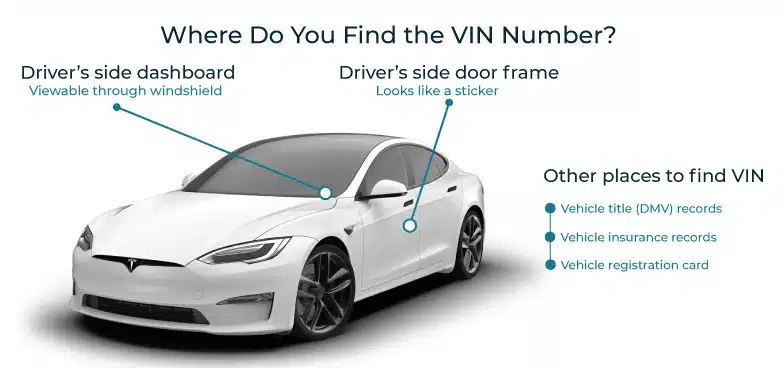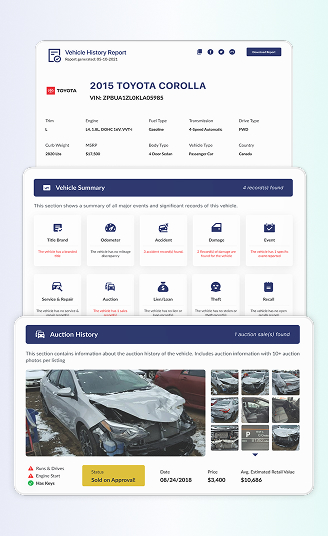
Saab Recall Check
Detailed Vehicle History’s Saab Recall Check is your quick VIN route to peace of mind. Reveal open recalls, risks, and official remedies. Get repair details, confirm eligibility for no-cost fixes, and make sure your Saab is up to date and road-ready. Protect safety, budget, and resale value.
What is a Saab Recall?
Saab was a Swedish car brand known for turbo power, clever safety ideas, and airplane-inspired design. General Motors (GM) first bought half of Saab in 1989 and the rest in 2000, then sold it to Spyker in 2010. The car company went bankrupt in 2011, and NEVS later bought its assets, ending new Saab production.
Today, “Saab” mainly means the defense company, not new cars. Like any brand, Saabs are not free from recalls. A Saab recall is an official safety repair that the automaker and the National Highway Traffic Safety Administration (NHTSA) say must be fixed at no cost to you. Many repairs, like Takata airbag recalls, are done free at former Saab Official Service Centers or GM dealerships. Always check the VIN to confirm open repairs and protect your safety and budget.
Why You Should Check the Saab Recall History?
The purpose of running a Saab recall check is to identify any safety issues or defects that may exist in a used Saab vehicle. Other reasons include:
Avoid Extra Cost
If a safety recall is identified, you may be able to have the issue fixed without incurring any costs. This can help you avoid costly repair fees and maintain a vehicle in good condition.
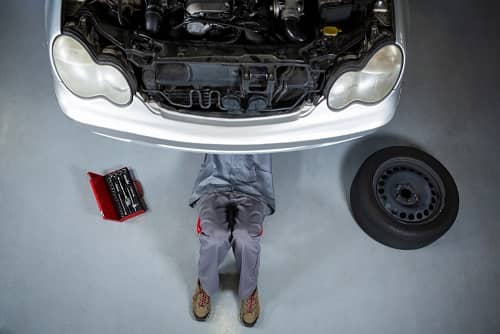
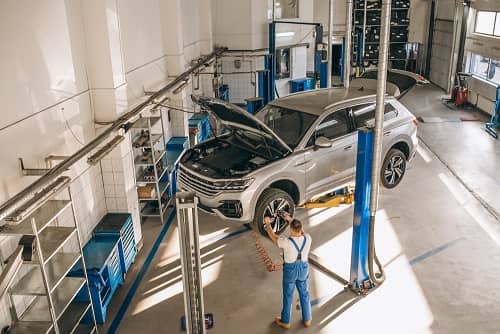
Compliance & Legal Protection
Before you buy or sell, run a Saab Recall Check. If a car has an outstanding recall, it may not meet federal safety standards, which can create legal exposure and hurt resale value. Repairs tied to recalls are free, so resolve them early (applies to many models, even older ones such as the Saab 900).
Maintain Value
Having a recall issue addressed can help maintain the value of a vehicle you own or plan to buy. This can be very beneficial if you plan to sell a Saab car in the future.
Generally, a Saab recall check can help you make sure a car is in good working order and ensure that the users and passengers are safe on the road.

How to Run Saab Recalls?
Get the Saab recalls report in under a minute by following these simple steps below.

Locate Your Saab VIN
You'll need your Vehicle Identification Number (VIN) handy. Check the driver-side dash by the windshield or the driver-side doorjamb. You can also use the VIN from your registration or insurance. Works for all Saabs.


Fill in the Form
Paste your VIN into the form above. If you don’t have it handy, enter your license plate number and we’ll generate your recall report instantly.


Receive Your Saab Recall Report
Wait for a few seconds for the Saab recalls report to be generated. Once it's finished, you can get the report on the recalls.
What is on the Saab Recall Check?
In the Detailed Vehicle History, a Saab recall check shows detailed information about safety recalls affecting your vehicle. Each record outlines when the recall was announced, which component is impacted, and what action you should take. For all the details, look below:
- Date of recalls: Indicates when Saab and NHTSA issued the recall.
- Affected Component: Identifies the exact part or system involved. Clear component details help you anticipate symptoms, understand the fix, and discuss repairs confidently with the dealer.
- Consequences: Explains what could happen if ignored (breakdowns, crashes, fines, or denied claims) so you understand the cost of delay versus the benefit of a free fix.
- Next step for the affected Saab: Confirm if your Saab is listed under the recall and schedule repairs. With a complete Vehicle Report, you’ll also see past recalls and repair status.
A Saab vehicle history report also includes title verification, ownership records, mileage records, warranty status/coverage, and more. Review the records below for more explanations:

Title Verification
Some Saab cars hide damage behind “clean” ads. Our report confirms official branding and mileage, helping you avoid flood/salvage/lemon Saab.
Ownership Records
Track who owned it, where it lived, and how long. Stable, long ownership suggests better care. Rapid turnovers are red flags. Our report lays it out clearly.


Warranty Status/Coverage
Your Saab may still have factory Basic, Powertrain, Corrosion, Roadside, or Maintenance coverage. This section shows months/miles left so you can plan repairs and avoid surprise costs.
Lien/Loan Records
See if any bank or lender still has a claim on this Saab. Unreleased liens can block title transfer, registration, or resale. Confirm release before you pay.
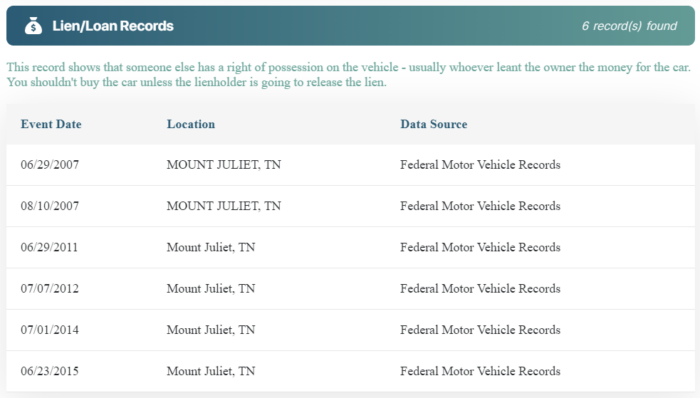
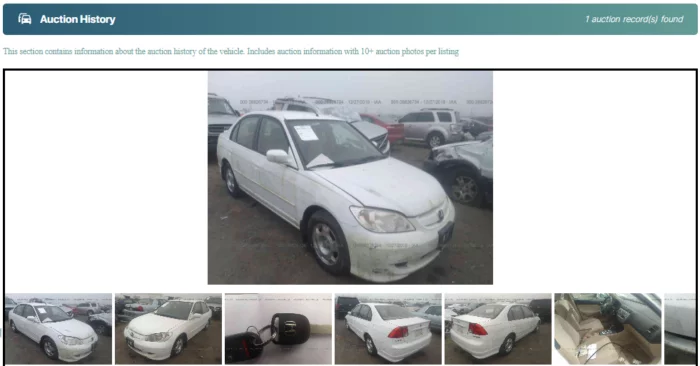
Auction & Sales History
View past listings with 10 or more photos, sale dates, prices, sellers, and locations. Identify flips, salvage titles, and damage before purchasing a Saab vehicle.
Mileage Records
Track your Saab odometer history. Confirm true use, spot rollbacks, and align maintenance intervals. Protecting value, warranty eligibility, and recall scheduling confidence.

Common Issues Leading to the Saab Recall
Saab vehicles have experienced multiple recalls due to safety and reliability issues. Common problems include the notorious Takata airbag, restraint system failures, steering and control issues, and powertrain issues. Here are some of the reasons cited in the Saab recall notices:
Airbag explosions
Takata inflators
The Takata crisis centers on inflators that use ammonium-nitrate propellant. Over years of heat and humidity, the propellant can degrade and the airbag can explode, sending metal fragments into the cabin.
For Saab, GM announced a campaign in February 2016 (NHTSA 16V-063) covering driver airbags on 2006–2011 9-3 and 2006–2009 9-5 models. The fix is a free inflator replacement performed at GM-brand dealers or Saab service centers.
Restraint system issues
Seat-belt retractor failure
The seat-belt issue that triggered a Saab recall involves the driver’s belt retractor cable on 9-3 Convertibles. GM’s first action arrived in early 2010 after reports of belts not retracting. On July 10, 2014, GM expanded the campaign to cover many 2004–2011 9-3 Convertibles. A failed cable can leave slack, reducing protection in a crash.
The fix is a free retractor repair/replacement at GM-brand dealers or Saab service centers. If you own or are shopping for a 9-3 Convertible from these years, run a Saab Recall Check and confirm status by VIN.
Steering/control issues
Rear suspension toe-link defects
The rear toe-link adjuster on the 2011 Saab 9-4X can loosen/corrode and eventually separate, upsetting rear-end alignment and stability. GM launched a campaign in June 2021 to swap the adjustable setup for a non-adjustable toe link and revised torque procedures. As dealers saw more cases, GM issued additional service updates in 2021–2022 to tighten inspection steps and part sourcing.
Powertrain issues
Fuel-pump failures
On certain 2010–2011 Saab 9-3 models, some internal pump components were manufactured outside of specifications. This could lead to the pump seizing, potentially causing the engine to shut off unexpectedly, which increases the risk of a crash.
Other notable issues
Electrical fire risk
The key hazard was an overheating driver door master switch. Moisture entry could corrode circuits and short, leading to smoke or a fire that, in rare cases, occurred when the SUV was parked and unattended. GM’s actions that year broadened existing SUV recalls to include Saab in June 2013, with more notices/parts updates following in 2014. Until repaired, some advisories told owners to park outside if the switch felt hot or emitted odors.
Understanding the Saab Recall Process
The NHTSA begins the recall process by investigating reported issues. If a defect is found, the manufacturer must issue a recall. See the steps of their process below
Report the Problem
Filing a complaint is the first action you should take. Each report is logged and compared with others. Multiple similar Saab complaints can signal a safety defect and prompt a formal investigation.
Investigation
When a Saab complaint is filed, NHTSA may open a recall investigation.
- Screening: NHTSA’s Office of Defects Investigation (ODI) checks credibility, looks for similar Saab complaints, and reviews service bulletins, warranty claims, police reports, and Early Warning data.
- Preliminary Evaluation (PE): If patterns appear, ODI opens a PE and sends an Information Request (IR) to the manufacturer for field/repair data.
- Engineering Analysis (EA): If concerns remain, ODI may tear down parts, test components, and analyze crash/field performance on affected Saab models.
- Recall Management: NHTSA ensures owners are notified and monitors repair completion rates.
Recalls
A safety recall means the manufacturer must inform owners and correct the problem. Recalls happen when a vehicle or component is unsafe or doesn’t meet regulations. Most are voluntary, and manufacturers are required to repair, replace, refund, or buy back the affected vehicle.
How Saab Vehicle Recalls Are Handled?
With Saab Automobile defunct, there isn’t an active automaker to run recalls alone. Instead, NHTSA coordinates investigations and tracks campaigns, while service networks tied to GM handle eligible Saab repairs (like Takata airbags) at no cost to owners. Your role is to report issues to NHTSA and check your VIN for open actions; when a recall applies, book service at a participating GM brand dealer or a Saab Official Service Center.
Automaker Role
Since production ceased after the 2011 bankruptcy, and NEVS acquired Saab’s assets in June 2012, there is no single active manufacturer of Saab vehicles to handle campaigns. Instead, GM supports relevant recalls, such as those related to Takata airbags, because GM owned Saab when many of the affected cars were produced.
Since Saab, as a car brand, no longer exists, GM addresses these issues through its dealer network. Additionally, the NHTSA requires that manufacturers provide free repairs and monitors the completion rates of these fixes.
NHTSA’s Role
Think of NHTSA as the referee. It sets the rules, takes complaints, investigates patterns, and oversees recall execution. Owners can search by VIN and see open recalls, investigations, and notices. If problems surface, NHTSA can push the responsible manufacturer/network to notify owners and remedy defects at no charge.
Your Role as the Vehicle Owner
Since Saab no longer manufactures cars, it is the owners who initiate the recall process. Here’s what you need to do:
- Check your Vehicle Identification Number (VIN) regularly.
- Report any symptoms to the NHTSA along with photos.
- Respond promptly to any recall letters you receive.
To get your vehicle repaired for free, schedule an appointment at a dealership within the GM network (Chevrolet, Buick, GMC, Cadillac) or a Saab service location. If parts are delayed, ask about interim guidance. Finally, be sure to keep all receipts related to your repairs.
Get the Saab Window Sticker by VIN
The recall report details necessary fixes, while the Saab window sticker lists your vehicle’s original specifications, including MSRP, options, colors, safety features, and equipment. Use this information with your recall results to verify components like airbags and electronics and to identify any missing features that might affect the car’s value.
This is an efficient way to check for authenticity, negotiate with confidence, and plan repairs for your desired Saab. Upgrade now to get a comprehensive overview of your Saab as it was when it left the factory.
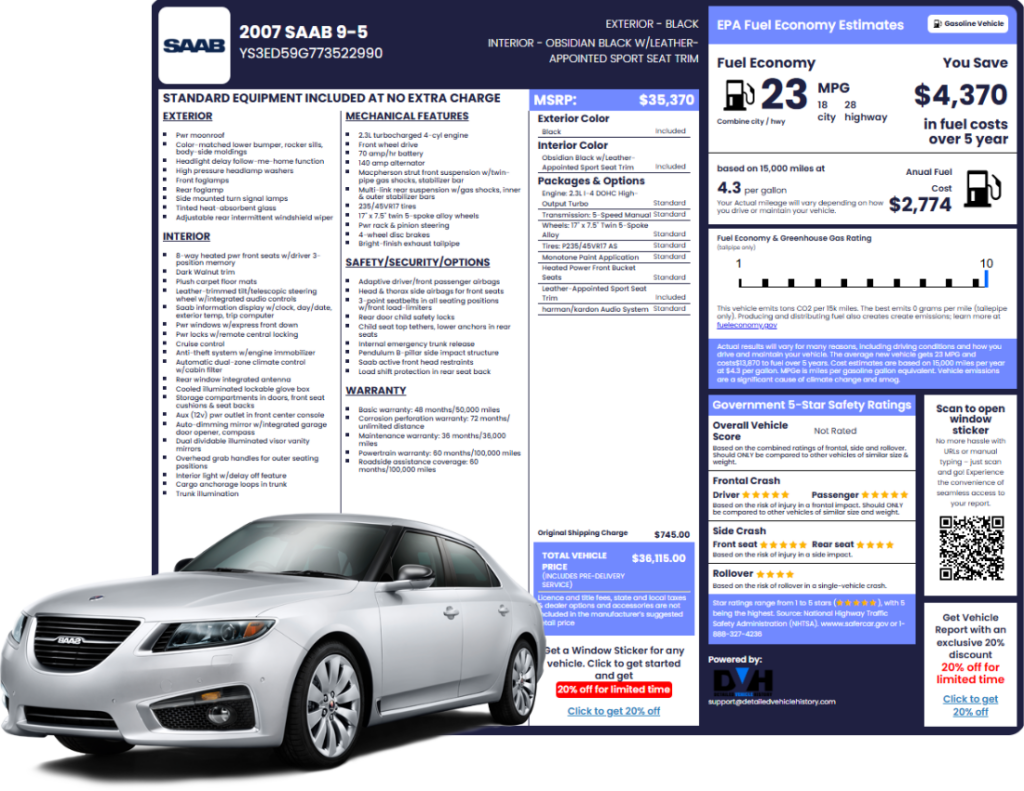
Why Use Detailed Vehicle History to Check Saab Recall?
Saab automaker no longer exists, so documentation matters. Our report unites open/past recalls, affected parts, remedy guidance, plus title checks, lien/loan records, ownership transfers, odometer readings, accident/damage entries, auction records with photos, and more.
Use the report to verify completion, keep receipts together, and prove the car is safe, compliant, and fairly priced. Choose clarity over guesswork.
Recall Check For Others Manufacturers
FAQ about Saab Recalls Check
How do I check if my Saab is recalled by VIN?
Use our Saab VIN Recall Check: type the VIN, get instant results on open/past recalls plus remedy instructions.
Can I look up Saab recalls by license plate if I don’t have the VIN?
Yes. Use our license plate lookup to pull the VIN and recall status in one step. It’s perfect when you’re shopping or the VIN isn’t handy.
Do car recalls expire, or is there a deadline for Saab recalls?
Safety recalls generally remain active, but parts availability and campaign windows vary
Are Saab recall repairs free for every owner, including second owners?
Yes, if a safety recall applies to your Saab, the repair is free regardless of how many owners the car has had. Federal guidance generally covers 15 years from the original in-service date. Since Saab’s automaker folded, GM’s dealer network performs eligible remedies like the Takata inflator replacement.
How long do Saab recall repairs usually take?
Many fixes take under a day, but timing depends on parts and dealer capacity. Start by running a VIN check, then call your chosen service center to schedule. Keep receipts with your report.
Do I get a loaner car for a Saab recall repair?
Loaner cars for Saab recall repairs aren’t guaranteed. Federal law requires the repair to be free, not the loaner. Many GM dealers provide one only for serious safety risks, long repair times, or parts shortages.
What happens if I ignore a recall on my Saab?
You accept safety risk, may face compliance issues, and could hurt resale value. Check your VIN today, book the no-cost repair, and keep the completion record.
Can a dealership sell a used Saab with an open recall?
Laws vary, but many sellers still list vehicles with open recalls. Protect yourself: run our VIN or plate lookup first, confirm recall status, and negotiate repairs before purchase.
Will an open or completed recall affect my Saab’s resale value?
Open recalls can reduce buyer confidence and price. Completed recalls with documentation can maintain value. Use our report to prove status and keep receipts.
Which Saab models have had the most recalls over the years?
Because they sold the most, 9-3 and 9-5 carry the heaviest recall history. The recalls include Takata airbags, 9-3 Convertible seat-belt retractor, and fuel-pump stalling.
How do I file a complaint if my Saab isn’t fixed after a recall?
Document the issue, contact the servicing dealer again, and escalate to the manufacturer support line handling Saab campaigns. Still unresolved? File a safety complaint with NHTSA. Keep all paperwork with your report; your window sticker helps confirm affected equipment.
What if there’s no remedy yet for my Saab recall?
Run our VIN check to confirm status, ask the dealer about interim guidance, and sign up for notifications. Keep the records handy.

